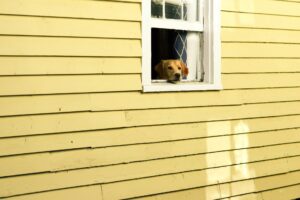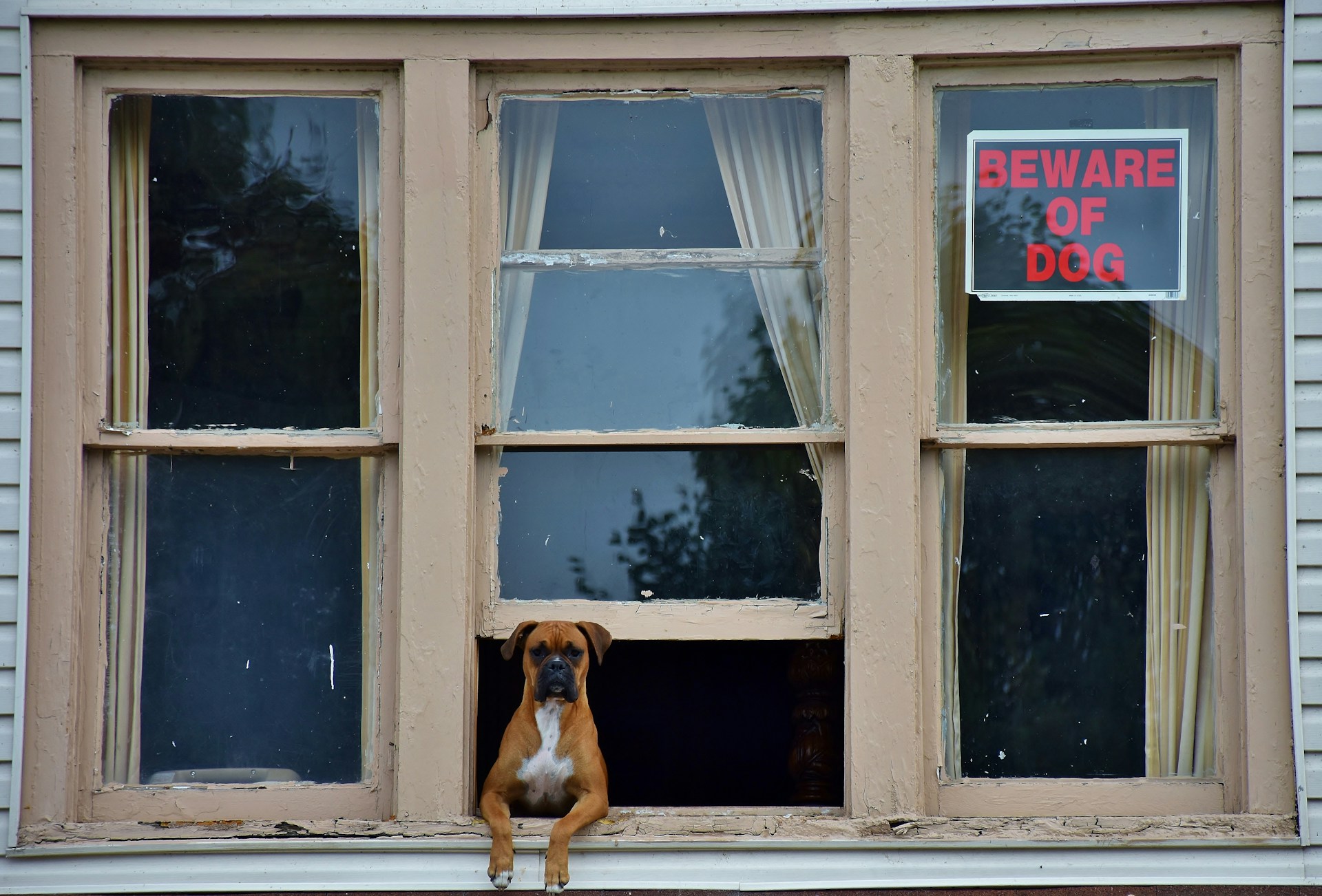Table of Contents
ToggleIntroduction
Protecting Window Sills from Dogs is more than just a task in home maintenance; it’s a crucial aspect of ensuring harmony between your living space and your canine companions.
Dogs, with their boundless energy and innate curiosity, often find joy in exploring various nooks and crannies of your home, and window sills are no exception.
As a responsible pet owner, understanding the reasons behind their interest and implementing effective strategies to safeguard these vulnerable areas is essential.

In this comprehensive guide, we embark on a journey to explore the nuances of protecting window sills from dogs, uncovering potential damages, and providing practical solutions to create a pet-friendly home where both your windows and your furry friends can coexist harmoniously.
Join us as we navigate through the intricacies of canine behavior and home protection, ensuring that your living space remains inviting for both you and your beloved dogs.
Protecting Window Sills from Dogs
Welcoming a dog into your home means embracing their exuberance and curiosity. However, this enthusiasm can sometimes lead to unintended consequences, especially when it comes to your home’s window sills.
In this guide, we’ll explore the reasons behind a dog’s interest in window sills, the potential damages they may cause, and effective strategies to protect these vulnerable areas while maintaining a happy and harmonious living space.
Understanding Why Dogs Are Drawn to Window Sills
Dogs are naturally drawn to windows for various reasons. The outside world presents a captivating array of sights, sounds, and scents that can trigger a dog’s curiosity. Additionally, windows offer a vantage point, allowing dogs to observe their surroundings, which taps into their instinctive need to be aware of their environment.
Potential Damages Caused by Dogs on Window Sills
While your dog’s interest in window sills is perfectly normal, it can result in damages that may require attention. Understanding these potential issues is the first step toward effective protection.
1. Scratching and Chewing
Dogs may scratch or chew on window sills out of boredom, anxiety, or simply as a way to explore their surroundings. This behavior can lead to visible scratches, dents, and damage to the window sill’s surface.
2. Stains and Smudges
Dogs, especially those with a penchant for nose prints, can leave behind stains and smudges on window sills. Over time, this can diminish the aesthetics of your windows and sills.
3. Structural Damage
Persistent scratching and chewing may lead to structural damage, compromising the integrity of the window sill. In severe cases, this could result in the need for repairs or replacement.
Related Posts :
Let’s Understand How To Keep Cats Away From Peace Lily? 10 Facts
Let’s Understand Top 15: Cat Sleeping Above My Head Meaning Spiritual
Let’s Understand Do Cats Get Horny? TOP 10 FACTS
Let’s understand Is Pura Safe for Cats?

Choosing Dog-Friendly Window Sill Materials
Preventing damages to your window sills starts with selecting materials that are resistant to scratching, easy to clean, and durable.
1. Durable and Scratch-Resistant Materials
Opt for window sills made from durable materials such as hardwood, metal, or composite materials that are less prone to scratches and dents.
2. Easy-to-Clean Surfaces
Choose window sill materials with smooth surfaces that are easy to clean. This helps in maintaining the aesthetic appeal and hygiene of your windows.
DIY Solutions to Protect Window Sills
Implementing do-it-yourself solutions can be effective in curbing your dog’s interest in window sills.
1. Applying Protective Coverings
Use materials like clear plastic, plexiglass, or even vinyl carpet runners to cover window sills temporarily. These coverings act as a barrier, protecting the surface from scratches and stains.
2. Introducing Distractions and Alternatives
Provide alternative outlets for your dog’s energy and curiosity. Interactive toys, puzzle feeders, and designated chewing items can divert their attention away from the window sills.
3. Training and Positive Reinforcement
Train your dog to associate the window sill with positive experiences. Reward them with treats or praise when they refrain from scratching or chewing the sill. Consistency is key in reinforcing positive behavior.
Commercial Products for Window Sill Protection
Several commercially available products are designed specifically to safeguard window sills from pet-related damages.
1. Specially Designed Pet-Friendly Coverings
Explore pet-friendly coverings and guards designed to fit various window sill shapes and sizes. These products are often made from materials that resist scratches and are easy to clean.
2. Bitter Sprays and Repellents
Utilize bitter-tasting sprays or repellents on window sills. These products discourage dogs from licking, chewing, or scratching due to their unpleasant taste and smell.
Creating a Dog-Friendly Window Sill Space
Rather than discouraging your dog’s interest altogether, create a space around the window sill that caters to their natural instincts.
1. Window Perches and Dog Beds
Provide comfortable window perches or designated dog beds near the window. This allows your dog to enjoy the view without directly interacting with the window sill.
2. Interactive Toys and Puzzles
Keep your dog engaged with interactive toys and puzzles placed strategically near the window. Mental stimulation can reduce boredom and minimize destructive behaviors.
Regular Maintenance and Inspection
Consistent maintenance and inspection of your window sills are essential in catching and addressing any potential damages early on.
Understanding Behavioral Triggers
Identifying the root causes of your dog’s interest in window sills—whether it’s boredom, anxiety, or curiosity—enables you to address these triggers more effectively.
Seeking Professional Help
If your dog’s behavior persists despite preventive measures, seeking professional help from a dog trainer or behaviorist can provide personalized strategies to address specific issues.
Conclusion
In conclusion, protecting window sills from the playful antics of your beloved dogs is a task that requires a thoughtful blend of understanding their behavior and implementing effective protective measures.
By choosing durable and scratch-resistant materials, utilizing DIY solutions, and exploring commercial products designed for pet-friendly environments, you can strike a balance between maintaining a visually appealing home and ensuring your canine companions remain happy and engaged.
Remember, creating a dog-friendly window sill space, coupled with regular maintenance and a keen awareness of behavioral triggers, contributes to a harmonious coexistence.
Whether it’s introducing distractions, incorporating designated perches, or seeking professional guidance, addressing the root causes of your dog’s interest in window sills enhances the overall well-being of both your home and your furry friends.
With these strategies in place, you can enjoy the view from your windows without worrying about potential damage to your cherished window sills.
Frequently Asked Questions
FAQs related to “Protecting Window Sills from Dogs”:
- Q: How can I prevent my dog from scratching the window sills?
- A: Implementing protective coverings, providing alternative distractions, and utilizing training methods with positive reinforcement can deter your dog from scratching the window sills.
- Q: Are there specific materials that dogs dislike for window sills?
- A: While preferences may vary, opting for durable and scratch-resistant materials such as hardwood, metal, or certain composites can discourage dogs from engaging in destructive behaviors.
- Q: Can I use common household items to protect my window sills from dogs?
- A: Yes, materials like clear plastic, plexiglass, or vinyl carpet runners can serve as effective temporary protective coverings for window sills.
- Q: How do I train my dog to avoid the window sills?
- A: Training involves positive reinforcement, rewarding your dog for avoiding scratching or chewing the window sills. Consistency and patience are key to successful training.
- Q: Do commercial repellents harm my dog?
- A: Most commercial repellents are designed to be safe for pets, using bitter tastes or smells to discourage unwanted behaviors. Always follow product instructions and consult your veterinarian if uncertain.
- Q: What should I do if my dog continues to damage the window sills despite preventive measures?
- A: Seek professional help from a dog trainer or behaviorist. They can provide personalized strategies to address specific issues and modify your dog’s behavior effectively.
- Q: How often should I inspect and maintain my window sills to prevent damages?
- A: Regular inspections every few weeks are advisable to catch any potential damages early on. Maintenance can involve cleaning, applying protective coverings, and ensuring the overall integrity of the window sills.
- Q: Can window perches and designated dog beds near the windows help?
- A: Yes, providing comfortable spaces for your dog near the windows, such as perches or designated beds, can divert their attention from directly interacting with the window sills.
- Q: Are there specific commercial products designed for pet-friendly window sill protection?
- A: Yes, there are various pet-friendly coverings and guards available, specifically designed to resist scratches and be easy to clean. These products cater to the unique needs of households with dogs.
- Q: What if my dog enjoys looking out the window? How can I balance their enjoyment with protecting the sills?
- A: Create a dog-friendly window sill space with comfortable perches, designated beds, and interactive toys. This allows your dog to enjoy the view without directly engaging with the window sills, striking a balance between enjoyment and protection.


